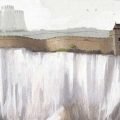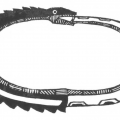
At one point they tried to calculate when time began, when exactly the earth had been created. In the mid–seventeenth century, the Irish bishop Ussher calculated not only the exact year, but also a starting date: October 22, 4,004 years before Christ. It was a Saturday (of course). Some even say Ussher gave a precise time of day as well—around six in the afternoon. Saturday afternoon, that sounds completely believable to me. When else would a bored creator set about building a world and finding himself some company? Ussher devoted years of his life to this, his work itself numbered two thousand pages in Latin; I doubt many have ever made the effort to read the whole thing. Nevertheless, his book became exceptionally popular, well, maybe not the book itself, but the actual discovery. They started to print the Bibles on the island with a date and chronology according to Ussher. This theory of the young earth (and of young time, if you ask me) captivated the Christian world. It should be noted that even scientists like Kepler and Sir Isaac Newton estimated specific years for the divine act of creation that more or less coincided with that of Ussher. But still, the most mind-boggling thing for me is not the year and its relative recency, but the specific day.
October 22, four thousand and four years before Christ, at six in the afternoon.
On or around December 1910, human character changed. So wrote Virginia Woolf. And one can imagine that December 1910, ostensibly like all the others, gray, cold, smelling of fresh snow. But something had been unleashed, which only a few could sense.
On September 1, 1939, early in the morning, came the end of human time.







